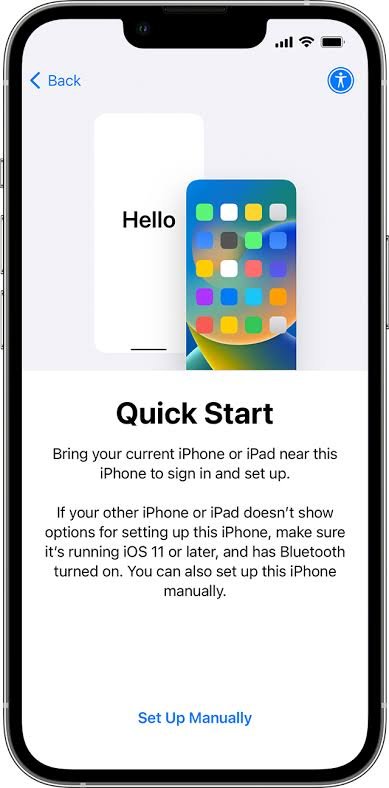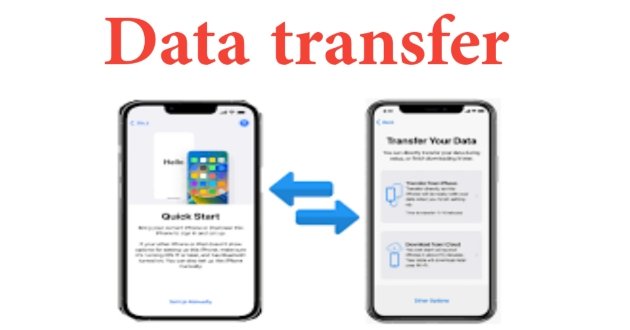In today’s digital age, the need for efficient data transfer has become paramount. Whether it’s sharing files between devices, collaborating on projects remotely, or backing up important documents, the demand for seamless data transfer solutions continues to grow. In response to this demand, developers have created a myriad of data transfer apps, each promising to simplify the process and enhance productivity. In this article, we’ll explore the evolution of data transfer apps, from their humble beginnings to the cutting-edge solutions available today.
The Birth of Data Transfer Apps Before the advent of data transfer apps, sharing files between devices was often a cumbersome and time-consuming process. Users relied on physical storage devices such as USB drives or external hard drives to transfer data, or they resorted to email attachments, which had size limitations and security concerns. Recognizing the need for a more efficient solution, developers began to explore ways to streamline the data transfer process.

Early Innovations The early iterations of data transfer apps focused primarily on peer-to-peer file sharing. Programs like BitTorrent revolutionized the way large files were distributed, allowing users to download and upload files directly from one another, rather than relying on centralized servers. While these platforms were effective for sharing large files, they lacked the simplicity and user-friendly interface that mainstream users demanded.
Rise of Cloud-Based Solutions As internet speeds increased and cloud technology advanced, a new generation of data transfer apps emerged: cloud-based solutions. Services like Dropbox, Google Drive, and Microsoft OneDrive offered users a convenient way to store, sync, and share files across multiple devices. By storing files in the cloud, users could access their data from anywhere with an internet connection, eliminating the need for physical storage devices and simplifying the data transfer process.
Security and Privacy Concerns With the rise of data breaches and privacy scandals, security became a top priority for data transfer apps. Users were increasingly wary of sharing sensitive information over the internet, fearing that their data could be intercepted or compromised. In response, developers implemented robust encryption protocols and multi-factor authentication mechanisms to protect user data. Additionally, many data transfer apps introduced granular permission settings, allowing users to control who has access to their files and folders.
Mobile Integration The proliferation of smartphones and tablets further drove the evolution of data transfer apps. As mobile devices became increasingly powerful and ubiquitous, users sought ways to transfer files between their mobile devices and desktop computers seamlessly. Developers responded by creating mobile apps that integrated seamlessly with their desktop counterparts, allowing users to transfer files between devices with just a few taps.
The Future of Data Transfer Apps Looking ahead, the future of data transfer apps is filled with exciting possibilities. Advancements in artificial intelligence and machine learning promise to further streamline the data transfer process, automating tasks such as file organization and categorization. Additionally, the ongoing rollout of 5G technology will dramatically increase internet speeds, making it faster and easier than ever to transfer large files.
In conclusion, data transfer apps have come a long way since their inception. What once was a cumbersome and time-consuming process has been transformed into a seamless and efficient experience, thanks to the innovations of developers and the advancements in technology. As we continue to embrace the digital age, data transfer apps will undoubtedly play a crucial role in how we share and collaborate on information.
Certainly! Let’s dive into the details of ShareMe, a powerful file-sharing app that allows seamless data transfer between devices.
The Ultimate File Transfer Solution
What Is ShareMe?
Table of Contents
ShareMe, formerly known as Mi Drop, is a revolutionary file-sharing app developed by Xiaomi Inc. It enables users to transfer various types of files effortlessly, including photos, music, videos, apps, and documents. Here are the key features:
- Ad-Free Experience: Unlike many other file-sharing apps cluttered with ads, ShareMe provides an uninterrupted user experience.
- Multilingual Support: ShareMe supports over 70 languages, making it accessible to users worldwide. You can choose your preferred language while using the app.
- Offline Data Transfer: ShareMe allows you to send files to other devices without an active internet connection. It provides an FTP address or a QR code for easy sharing.
- Cross-Platform Compatibility: Whether you’re on Android, iOS, Windows, or Mac, ShareMe ensures smooth data transfer between mobile devices and PCs.
- User-Friendly Interface: ShareMe organizes files into categories (music, apps, images) for easy search and sharing.
- Security and Privacy: ShareMe prioritizes data safety while delivering a top-notch file transfer experience.
How to Use ShareMe:
- Install ShareMe: Download ShareMe from the official website or your app store.
- Select Files: Open the app and choose the file you want to share.
- Send: Tap “Send” and select a recipient from your contacts or scan their QR code.
File Size Limit:
ShareMe allows you to send files up to 20GB in size, without restrictions on format or content type.
Supported Devices:
While ShareMe comes pre-installed on Xiaomi smartphones, it runs seamlessly on phones from other brands like Samsung, Oppo, OnePlus, Vivo, LG, and Realme.
Reconnect Anytime:
If a transfer is interrupted, ShareMe lets you resume where you left off with a single tap.
Get ShareMe Now:
Experience reliable, secure, and hassle-free file transfers with ShareMe. Download it today and share content like never before!
Remember, ShareMe prioritizes your privacy and delivers lightning-fast data transfer. Happy sharing!
